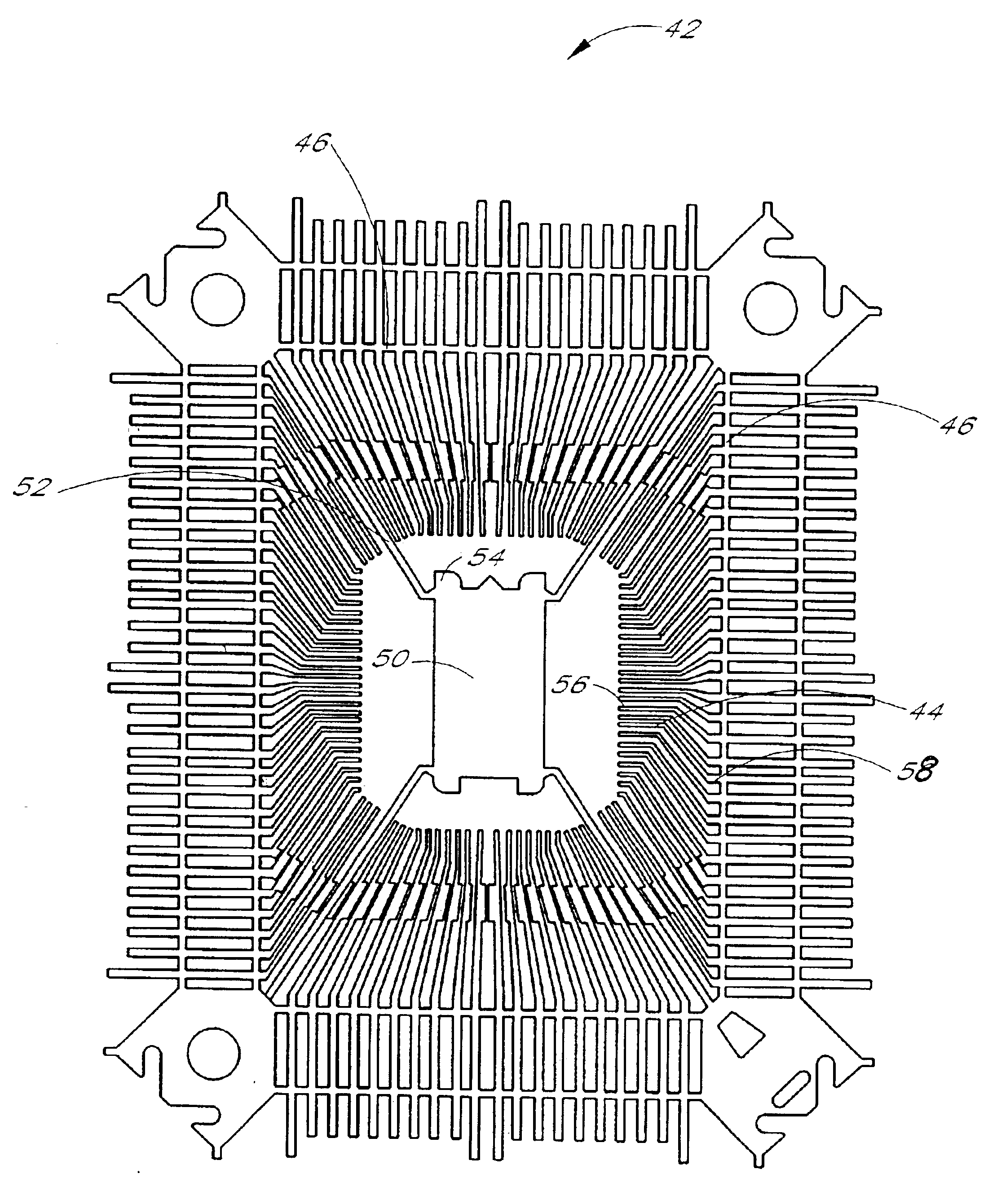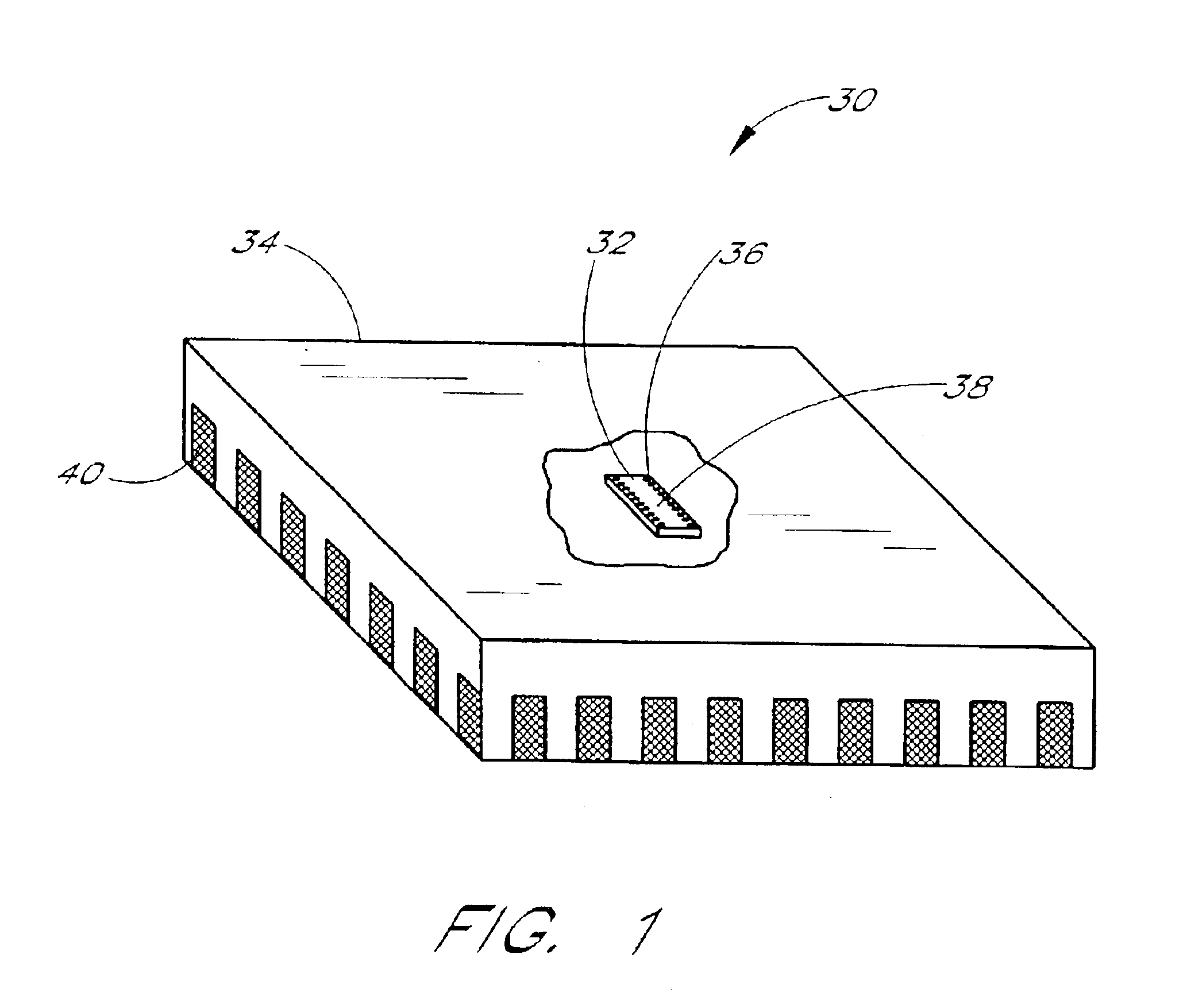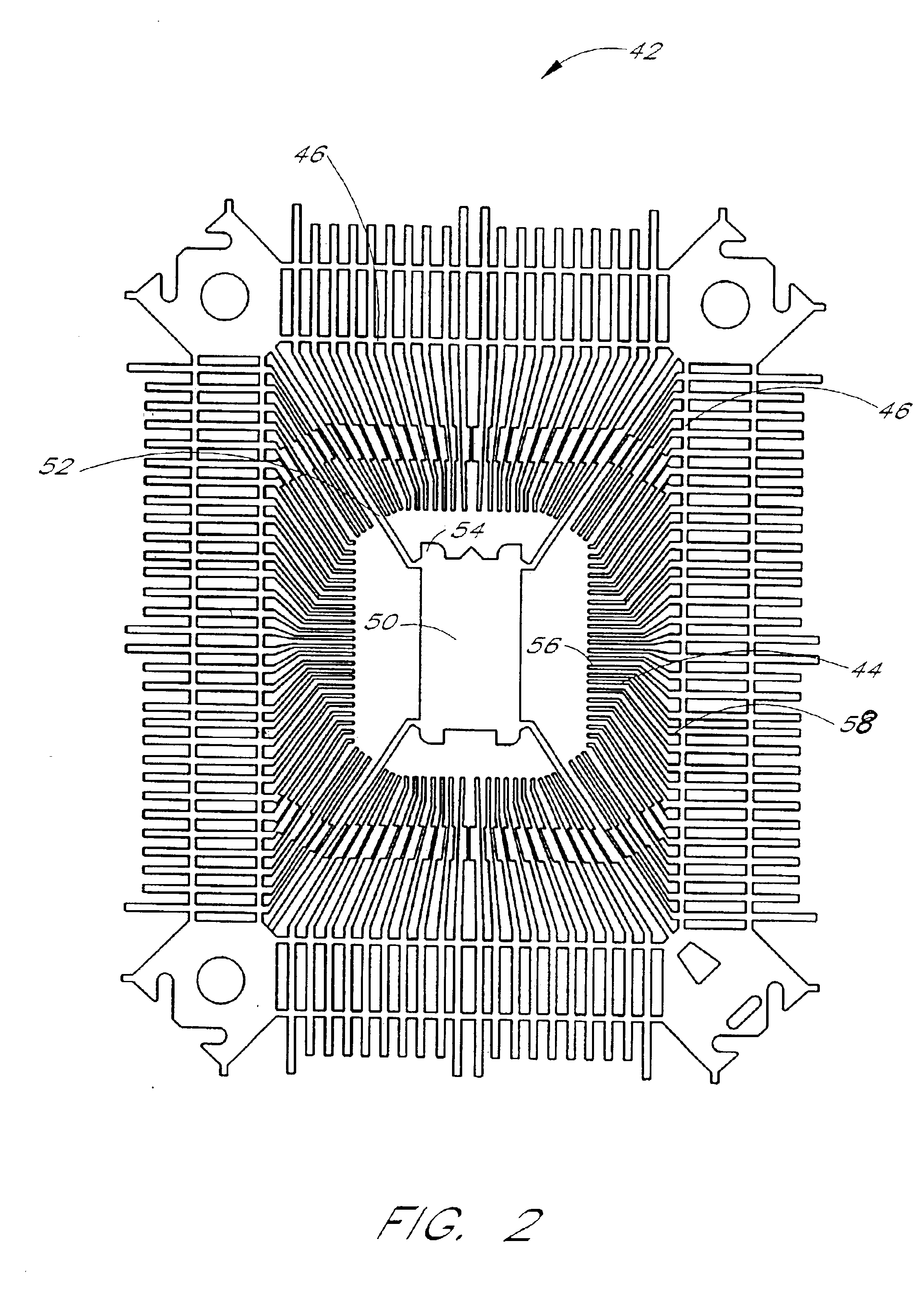Alignment and orientation features for a semiconductor package
- Summary
- Abstract
- Description
- Claims
- Application Information
AI Technical Summary
Benefits of technology
Problems solved by technology
Method used
Image
Examples
Embodiment Construction
Reference will now be made to the drawings wherein like numerals refer to like parts throughout. In particular, FIG. 1 illustrates a semiconductor device 30 in accordance with one aspect of the present invention. The semiconductor device 30 comprises a known semiconductor die 32 housed within a known packaging material 34. The semiconductor die 32 comprises a preferred configuration of circuit elements that are interconnected so as to provide an electrical integrated circuit of any of a number of possible configurations. The semiconductor die 32 further comprises a first plurality of bonding pads 36 disposed a first surface 38 of the die 32 that electrically couple with a plurality of circuit nodes of the electrical circuit of the die 32.
As shown in FIG. 1, the semiconductor device 30 further comprises a plurality of exposed leads 40 that extend into the packaging material 34 so as to provide conducting paths that extend from the leads 40 toward the encapsulated die 32. As will be d...
PUM
 Login to View More
Login to View More Abstract
Description
Claims
Application Information
 Login to View More
Login to View More - R&D
- Intellectual Property
- Life Sciences
- Materials
- Tech Scout
- Unparalleled Data Quality
- Higher Quality Content
- 60% Fewer Hallucinations
Browse by: Latest US Patents, China's latest patents, Technical Efficacy Thesaurus, Application Domain, Technology Topic, Popular Technical Reports.
© 2025 PatSnap. All rights reserved.Legal|Privacy policy|Modern Slavery Act Transparency Statement|Sitemap|About US| Contact US: help@patsnap.com



